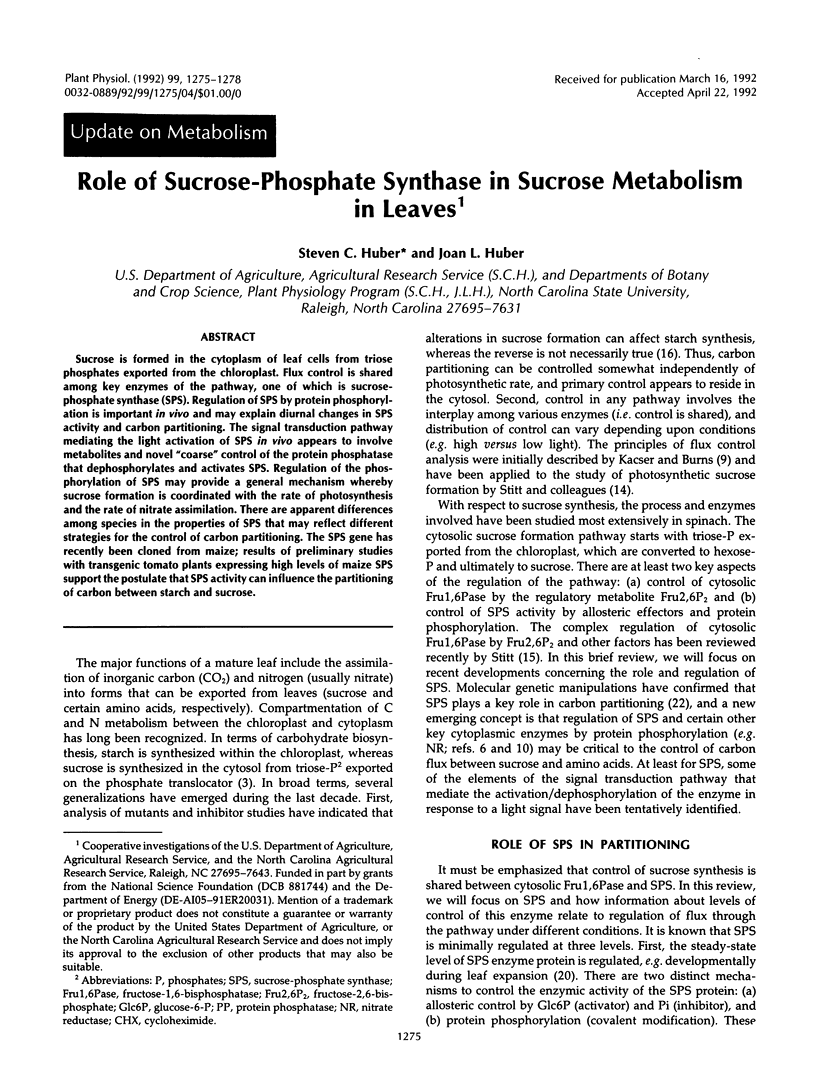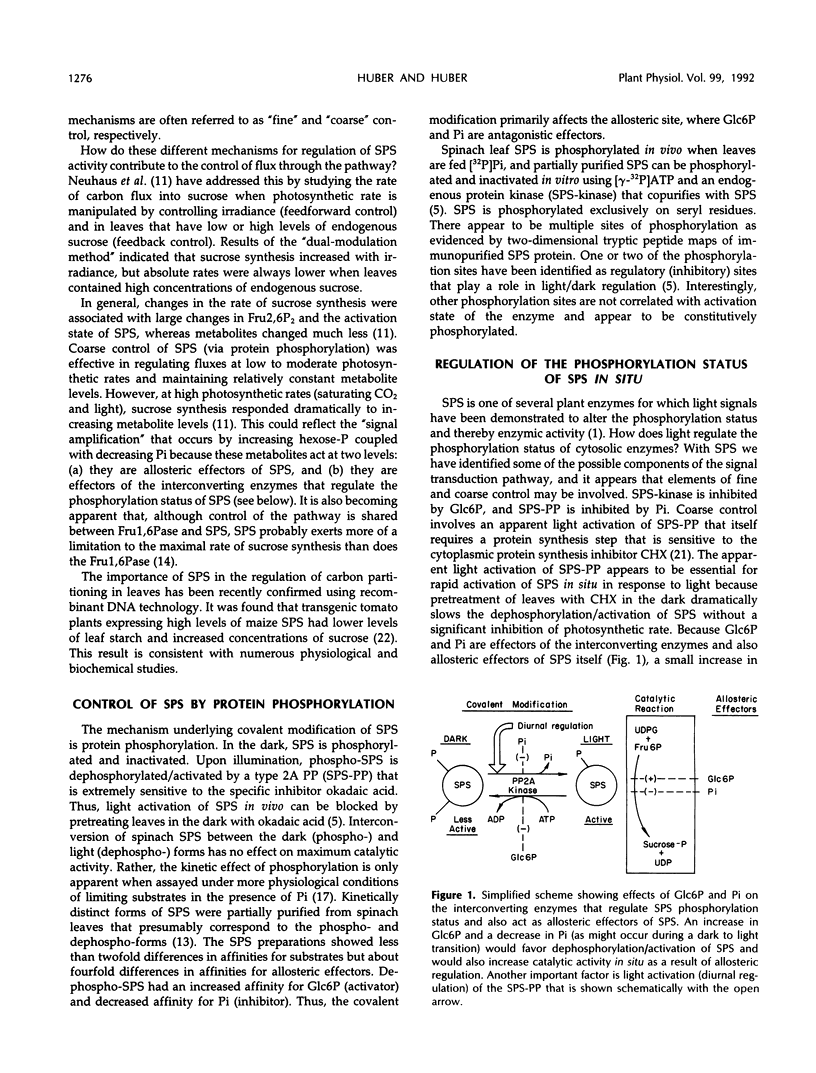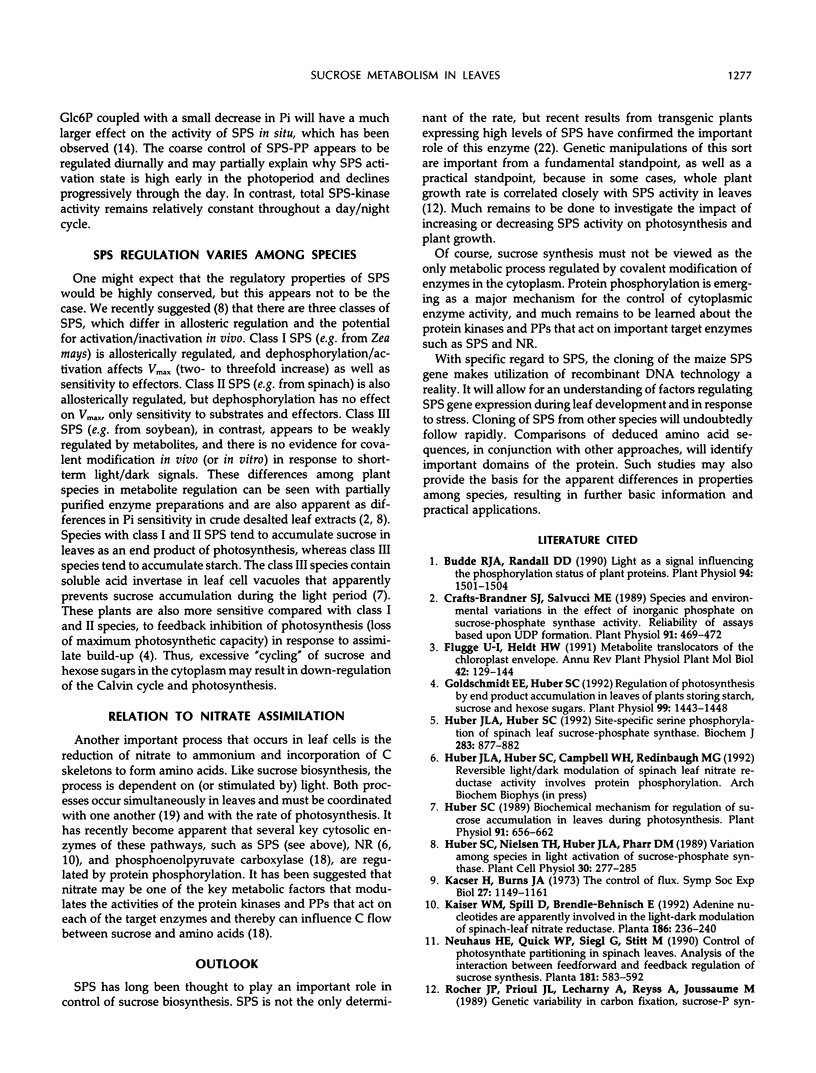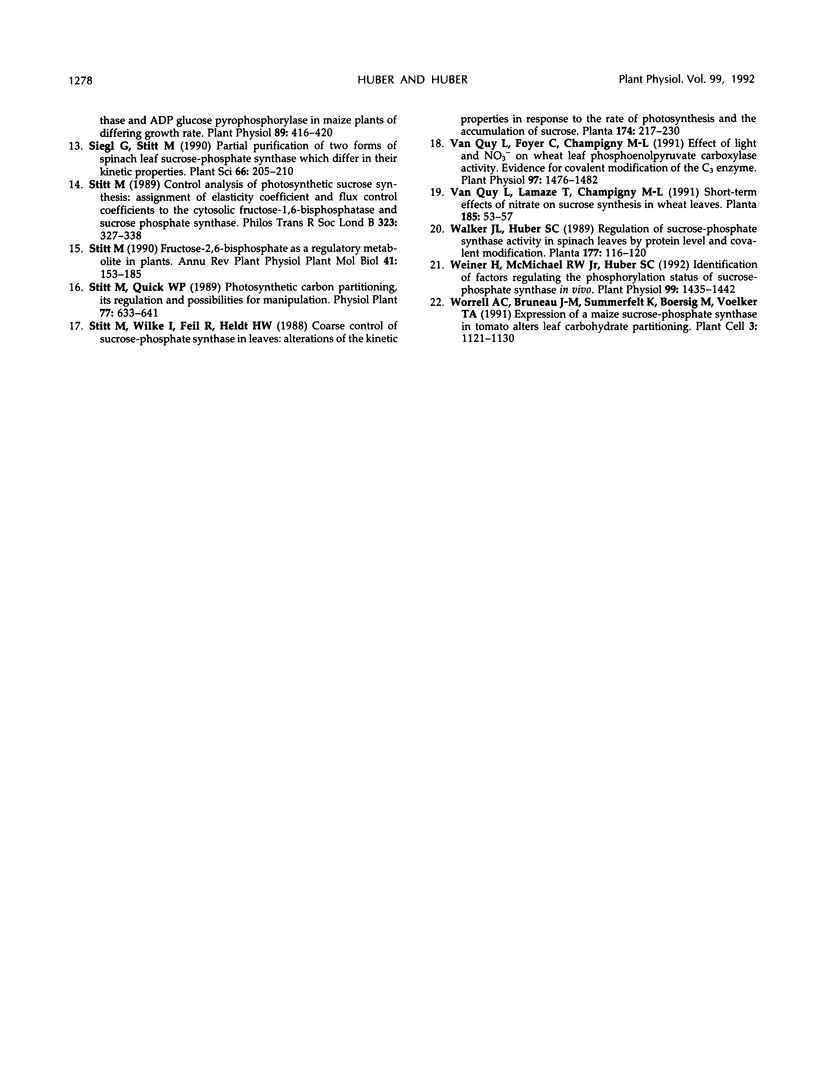Abstract
Sucrose is formed in the cytoplasm of leaf cells from triose phosphates exported from the chloroplast. Flux control is shared among key enzymes of the pathway, one of which is sucrose-phosphate synthase (SPS). Regulation of SPS by protein phosphorylation is important in vivo and may explain diurnal changes in SPS activity and carbon partitioning. The signal transduction pathway mediating the light activation of SPS in vivo appears to involve metabolites and novel “coarse” control of the protein phosphatase that dephosphorylates and activates SPS. Regulation of the phosphorylation of SPS may provide a general mechanism whereby sucrose formation is coordinated with the rate of photosynthesis and the rate of nitrate assimilation. There are apparent differences among species in the properties of SPS that may reflect different strategies for the control of carbon partitioning. The SPS gene has recently been cloned from maize; results of preliminary studies with transgenic tomato plants expressing high levels of maize SPS support the postulate that SPS activity can influence the partitioning of carbon between starch and sucrose.
Full text
PDF



Selected References
These references are in PubMed. This may not be the complete list of references from this article.
- Budde R. J., Randall D. D. Light as a signal influencing the phosphorylation status of plant proteins. Plant Physiol. 1990 Dec;94(4):1501–1504. doi: 10.1104/pp.94.4.1501. [DOI] [PMC free article] [PubMed] [Google Scholar]
- Crafts-Brandner S. J., Salvucci M. E. Species and Environmental Variations in the Effect of Inorganic Phosphate on Sucrose-Phosphate Synthase Activity : Reliability of Assays Based Upon UDP Formation. Plant Physiol. 1989 Oct;91(2):469–472. doi: 10.1104/pp.91.2.469. [DOI] [PMC free article] [PubMed] [Google Scholar]
- Goldschmidt E. E., Huber S. C. Regulation of photosynthesis by end-product accumulation in leaves of plants storing starch, sucrose, and hexose sugars. Plant Physiol. 1992 Aug;99(4):1443–1448. doi: 10.1104/pp.99.4.1443. [DOI] [PMC free article] [PubMed] [Google Scholar]
- Huber J. L., Huber S. C. Site-specific serine phosphorylation of spinach leaf sucrose-phosphate synthase. Biochem J. 1992 May 1;283(Pt 3):877–882. doi: 10.1042/bj2830877. [DOI] [PMC free article] [PubMed] [Google Scholar]
- Huber S. C. Biochemical Mechanism for Regulation of Sucrose Accumulation in Leaves during Photosynthesis. Plant Physiol. 1989 Oct;91(2):656–662. doi: 10.1104/pp.91.2.656. [DOI] [PMC free article] [PubMed] [Google Scholar]
- Le Van Quy, Foyer C., Champigny M. L. Effect of Light and NO(3) on Wheat Leaf Phosphoenolpyruvate Carboxylase Activity: Evidence for Covalent Modulation of the C(3) Enzyme. Plant Physiol. 1991 Dec;97(4):1476–1482. doi: 10.1104/pp.97.4.1476. [DOI] [PMC free article] [PubMed] [Google Scholar]
- Rocher J. P., Prioul J. L., Lecharny A., Reyss A., Joussaume M. Genetic Variability in Carbon Fixation, Sucrose-P-Synthase and ADP Glucose Pyrophosphorylase in Maize Plants of Differing Growth Rate. Plant Physiol. 1989 Feb;89(2):416–420. doi: 10.1104/pp.89.2.416. [DOI] [PMC free article] [PubMed] [Google Scholar]
- Weiner H., McMichael R. W., Huber S. C. Identification of factors regulating the phosphorylation status of sucrose-phosphate synthase in vivo. Plant Physiol. 1992 Aug;99(4):1435–1442. doi: 10.1104/pp.99.4.1435. [DOI] [PMC free article] [PubMed] [Google Scholar]
- Worrell A. C., Bruneau J. M., Summerfelt K., Boersig M., Voelker T. A. Expression of a maize sucrose phosphate synthase in tomato alters leaf carbohydrate partitioning. Plant Cell. 1991 Oct;3(10):1121–1130. doi: 10.1105/tpc.3.10.1121. [DOI] [PMC free article] [PubMed] [Google Scholar]


